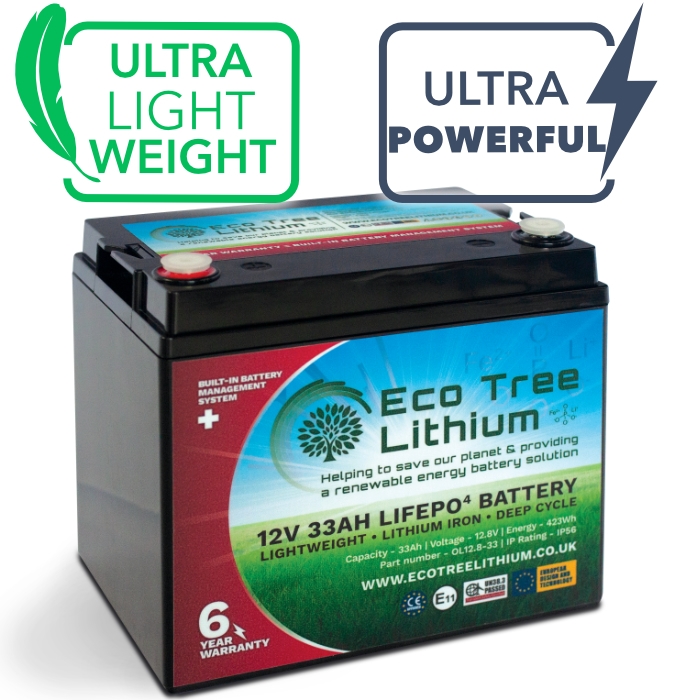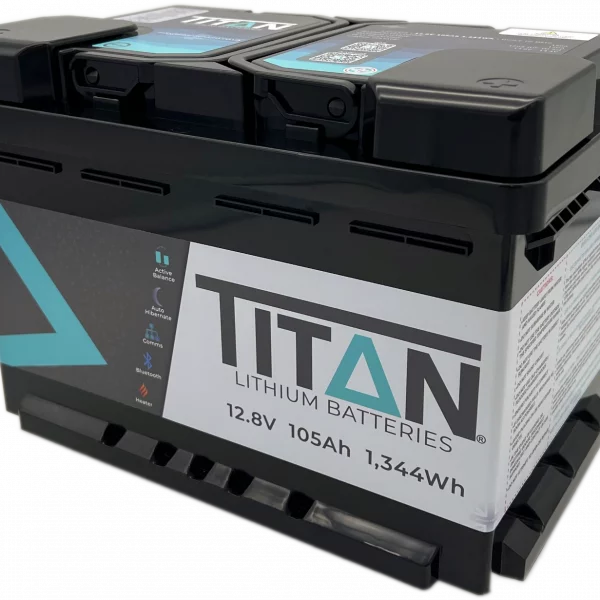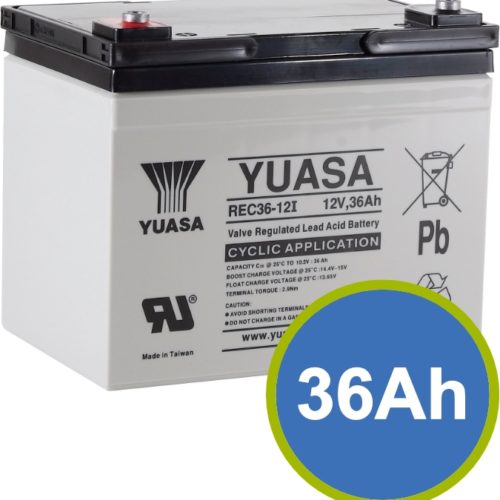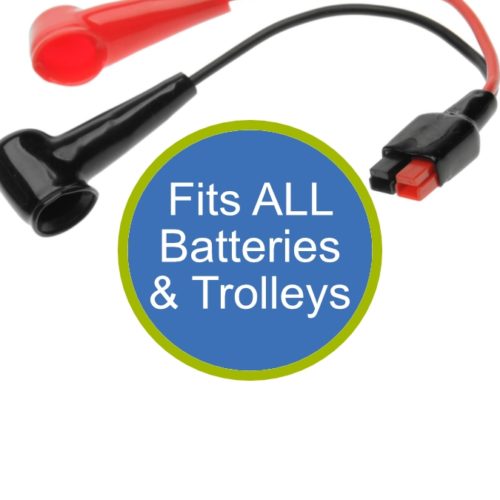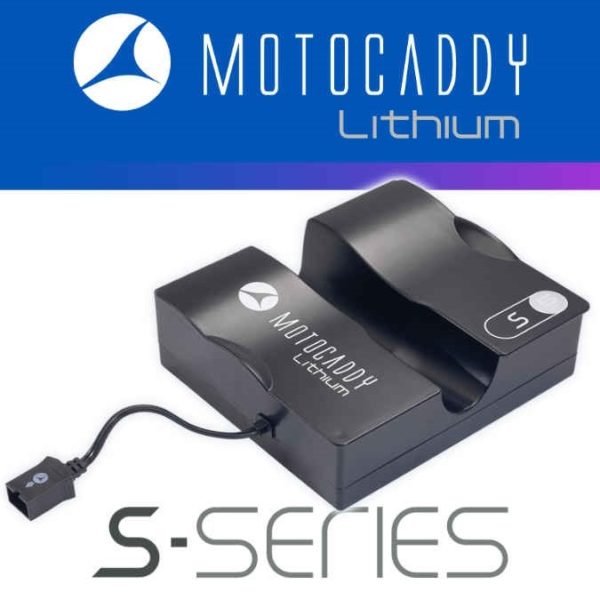Description
Eco Tree 33Ah Lithium (LiFePo) Battery
Perfect for Mobility Caravans Motorhomes & Conversions including off-grid camping and Marine use as well as any other battery supply needs
12.8V | 33Ah | 423Wh
Weight: 4.9Kg

M8 Terminals with Bolts & Washers Included
Perfect drop-in replacement for lead-acid batteries with eyelet connections. Automotive round post adaptors available upon request.
Lithium drop in replacement for:
REC36-12 | NPC30-12 | NPC33-12 | GF1225YG | 8GU1H | FGC23505
Lasts longer between charges & overall life
Compared to lead-acid lithium batteries boast a huge energy capacity which means they last longer per charge and can be cycled (how many times discharged & charged) up to x10 more than lead-acid batteries which makes them perfect for investing in today’s energy hungry equipment off-grid and renewable demands.
Weighs 5.7Kg
Compared to the lead acid equivalent (same physical size) that would weigh 12Kg.
To get the same capacity in lead acid it’ll be 25Kg and a physically larger battery. Eco Tree can achieve this amazing weight saving and save on space.
 Full output all the time
Full output all the time
Ecotree lithium will maintain a consistent voltage output until it gets to approximately 95% discharged. When running equipment this results in a consistent and predictable behaviour with a flat discharge voltage rather than a curve.
Eco Tree’s leading BMS (Battery Management System) allows greater current throughput than its competitors which is why we’re confident in recommending them as direct lead acid replacements in most cases.
This 33Ah battery will max out at 30Amps consistent (i.e. running anything for more than 30 seconds) and can pulse up to 60Amps for anything less than 3 seconds – going over these thresholds will trigger the BMS to disconnect the internal cells to the external terminals – the battery will need to go on a charger (preferably a lithium charger) in order to reset.
 Fully charged in as little as 3 hours
Fully charged in as little as 3 hours
Eco Tree lithium can be charged at super high rates which unlocks the full potential of lithium batteries. When charged at their recommended rate these batteries can go from 5% to 90% in less than 2 hours.
Eco Tree’s BMS allows the use of 98% of all chargers on the market with a specific AGM/Gel mode/setting but we’d recommend taking a look below at our recommended charge rate – lithium’s large capacity means that they can take a while to charge if the charger is small in output (1-5Amps). If you’re not sure if your current equipment is suitable please get in contact and we’d be happy to check.
For the full benefit of lithium we’d recommend taking a look at a specific lithium charger. Lithium chargers aren’t too different to normal ones but do have a UVP mode (Under Voltage Protection) – this means that when the BMS has triggered and there’s no voltage at the terminals the charger can reset the BMS and allow the battery to be charged – other chargers without UVP modes will look for a voltage before starting their charge so may not be able to reset a triggered BMS.
 Invest in your battery future
Invest in your battery future
Eco Tree’s super long life and incredible cycle life means the overall cost over the battery’s life is much cheaper than lead acid equivalents.
Because lithium can be discharged to 100% of their capacity (~90% with Gel ~75% AGM & ~60% traditional flooded lead acid) and with their improved energy density they can be cycled magnitudes more than lead acid. With average use (discharged each use to 50% between 20ºC – 25ºC) Eco Tree will produce ~5000 cycles over its lifetime which equates to around a decade under normal use. The most premium lead-acid gel batteries can achieve 500 cycles.
1 cycle = 1 discharge + 1 charge
5000 cycles ÷ 365 days (discharged to 50% everyday) = 13 Years
Because of the above Ecotree lithium is also a perfect addition to off-grid systems and renewables as the price per charge/price per kWh is drastically reduced.
Lithium Iron Phosphate (LiFePO4)
Eco Tree’s LiFePO4 cells are inherently made to be safe; so much so that we consider them to be safer than lead-acid thanks to their BMS. They can be used in any orientation (e.g. on its side) although on its base will give the best performance.
They contain absolutely no acid generate no gas emissions and are highly recyclable. Any sign of anything that could damage the battery the BMS will protect itself by shutting off – simply connect to a charger to turn the BMS back on.

Lithium cylindrical cells made by Saft
Saft of France is one of the oldest largest and most experienced battery manufacturers there is. Their cells are made with quality in mind; so much so they are the go to for military and space energy solutions. With over 100 years of experience there is none more suited to the job.

6 Year Full Warranty
Direct manufacturers’ full warranty protects you from any manufacturing defects. Usual terms & conditions apply – normal wear and tear over-cycling (used too hard) BMS triggering external damage or lack of care are not covered.
Batteries are very expensive to return – please ensure you make sure lithium is suitable for your requirements before purchasing – contact us for any and all advice.
Technical Specifications:
(Important maximum thresholds marked in red)
ELECTRICAL SPECIFICATIONS | |
|---|---|
| Nominal Voltage | 12.8V |
| Nominal Capacity (C20) | 33Ah |
| Energy (use this for energy calculations) | 423Wh |
| Resistance | 30mΩ |
| Efficiency | 99% |
| Self Discharge | <3% per Month |
| Maximum Modules in Series | 4 |
| Maximum Modules in Parallel | 12 |
MECHANICAL SPECIFICATIONS | |
|---|---|
| Dimensions (L x W x H) | 195 x 130 x 167mm |
| Weight | 4.9Kg |
| Terminal Type | M8 (Bolt – included) |
| Case Material | ABS & PC |
| Enclosure Protection | IP54 |
| Cell Type | Cylindrical |
| Chemistry | LiFePO4 |
DISCHARGE SPECIFICATIONS | |
|---|---|
| Maximum Continuous Discharge Current | 30A |
| Peak Pulse Discharge Current (~3 Seconds) | 60A |
| Low Voltage Charge (charge when it gets to this voltage) | 11.6V |
| Discharge Voltage Cut-Off (BMS will disconnect & will need to be reset via charging with lithium charger capable of resetting) | 10.0V |
| Reconnect Voltage | 12.8V |
| Short Circuit Protection | 200-800µs |
CHARGE SPECIFICATIONS | |
|---|---|
| Recommended Charge Current | 5-8A |
| Maximum Charge Current | 16.5A |
| Recommended Charge Voltage | 14.2 V – 14.6V |
| Peak Charge Voltage Cut-Off | 15.6V |
| Reconnect Voltage | 15.2V |
| Balancing Voltage | 14.4V |
TEMPERATURE SPECIFICATIONS | |
|---|---|
| Discharge Temperature | -20 to 45ºC |
| Charge Temperature | 0 to 45ºC |
| Storage Temperature | -20 to 40ºC |
| PCM High Temperature Cut-Off | 85ºC |
COMPLIANCE | |
|---|---|
| Certifications | CE (battery) |
| 93/66/EEC | |
| Shipping Classification | UN 3480 CLASS 9 |
Frequently Asked Questions:
Are lithium batteries safe?
Lithium batteries are extremely safe thanks to their BMS. The BMS is a small circuit board that controls all aspects of the battery and is constantly monitoring everything from output input temperature and more. Having this control means that if there’s anything the BMS doesn’t like it’ll take precautions so that the battery is not damaged – which is how lithium can be dangerous. The BMS is rock solid in terms of reliability – it’s unheard of to have a BMS fail.
Lithium also has no dangerous elements used in its construction that you can come into contact with and they do not produce any gasses – lead acid batteries have lead terminals that you may touch and have sulphuric acid as their electrolyte. They also gas hydrogen when in use so can cause dangerous build ups if not vented properly.
Which lithium battery should I go for?
Most of our lithium range use traditional lead acid battery cases so a lot of them are drop in replacements for existing lead acid – we’d always go for a like-for-like in physical size so you can experience the benefit of lithium.
If you don’t have a battery currently and are not sure then we’d recommend taking a look at any size constraints you may have and then seeing what your demands are. For example if you already have a battery box / bay that’s for 110Ah leisure batteries and want to run normal loads (like lights water pumps motor-movers inverters etc) then there’s a good chance we’ll recommend a 80-110Ah lithium battery. A good way to compare lithium to lead acid is to look at the Wh ratings – lithium tends to be about double the capacity compared to lead acid.
We’re always happy to give recommendations to individuals as every application and/or vehicle is unique – we may ask what your demands are in Watts or Amps; these ratings will be on the back of your appliances.
Do I need a special charger and will lithium work with my existing equipment?
You do not need a special charger for lithium to be installed. We do however recommend having a charger with a AGM or Gel setting as this will charge at the voltage lithium wants to see. If you do not have a charger with these settings we’d recommend either a CTEK if you’d like to use the charger on other things like your car or if it’s just for charging the lithium battery we’d recommend a lithium charger. On-board chargers on motorhomes and caravans traditionally have a higher charge voltage anyway so will be safe to install.
The difference between the chargers is that a lithium charger will have a BMS reset function that will reawaken the battery if the BMS is triggered. Normal chargers want to detect a voltage when connected before they start their charge program – a triggered BMS in a lithium battery will mean there is no voltage at the terminals so a normal charger would not be expected to reset a BMS. If on a split charge system simply running the engine should reset a BMS.
The only piece of equipment that may be made redundant is a state of charge meter. These rely on voltage readings to calculate battery charge percentage – as lithium keeps its voltage steady when being discharged the battery could be at 50% capacity but it’s voltage is still high. There are specific lithium monitors available on the market.
Will installing a lithium battery damage my electrical system?
No. Unless putting multiple batteries in series and putting incorrect voltage through a system there is no way for a lithium battery to cause damage. A lithium battery does not demand extra power when charging (nor do normal lead acid batteries) – all batteries will charge at the rate they receive.
Can I use an inverter?
Yes but it will depend on which battery and the rating of the inverter. There are a few inverters that can take up to double their Watt rating for a split second when they switch on – this is called an in-rush current. If you have a 1000W inverter it may demand 2000W when switched on; this could trigger the lithium battery’s maximum discharge threshold and cause a shutdown.
Is lithium recyclable?
Yes – there are a few plants in the EU that fully recycle these larger lithium batteries and there are plans to open one here in the UK. We can recycle old lithium batteries at a cost (businesses have to pay for recycling) or simply take it to your local council recycling centre. Never throw these batteries in the bin as they can cause fires when they get compacted by bin lorries.
Is lithium sustainable?
There’s lots of arguments for and against how sustainable lithium is. The one thing that can’t be argued is that lithium has a huge life cycle – you may use 3-4 lead acid batteries in the time one lithium battery wears out and each of those lead batteries have to be made shipped to the UK distributed and sold to then be taken for recycling which is a energy intensive process and then made into new batteries again. Lithium is currently still quite hard to recycle but we don’t need to do it nearly as often.

